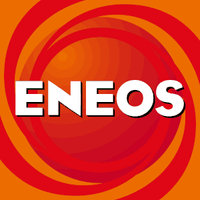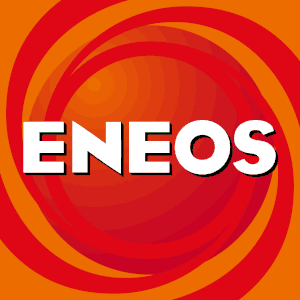
ENEOS Holdings Inc
TSE:5020


Utilize notes to systematically review your investment decisions. By reflecting on past outcomes, you can discern effective strategies and identify those that underperformed. This continuous feedback loop enables you to adapt and refine your approach, optimizing for future success.
Each note serves as a learning point, offering insights into your decision-making processes. Over time, you'll accumulate a personalized database of knowledge, enhancing your ability to make informed decisions quickly and effectively.
With a comprehensive record of your investment history at your fingertips, you can compare current opportunities against past experiences. This not only bolsters your confidence but also ensures that each decision is grounded in a well-documented rationale.
Do you really want to delete this note?
This action cannot be undone.

| 52 Week Range |
550.9
856.5
|
| Price Target |
|
We'll email you a reminder when the closing price reaches JPY.
Choose the stock you wish to monitor with a price alert.
This alert will be permanently deleted.
 ENEOS Holdings Inc
ENEOS Holdings Inc


 You don't have any saved screeners yet
You don't have any saved screeners yet

I would like to start by thanking our shareholders for their support and advice for ENEOS group's business activities before talking through the FY 2021 Q1 financial results using the PowerPoint material.
Slide 3, please. First, I would like to explain the highlights of FY 2021 Q1 financial results. Operating income, excluding inventory valuation effects, is down JPY 8.7 billion year-on-year to JPY 74.5 billion. Major drivers are as shown on the slide, such as the increase in profits in the oil and natural gas E&P and the Metals segment, mainly due to higher oil, copper and other resource prices and the decrease in profits of the Energy segment due to lower domestic petroleum product and export margins. Operating income, including inventory valuation effects, is up JPY 141 billion to JPY 162 billion, and the net income attributable to owners of the parent is JPY 97.6 billion.
Slide 4 shows the business environment. The crude oil price in Q1 is up significantly year-on-year due to the expectation of economic recovery, along with the progress of the COVID-19 vaccination. It's currently hovering around $70.
Next is the copper price. At the beginning of the year, the price was around $4 per pound, but it reached a record high of $4.86 in May due to the economic recovery in various countries and expectations of increased copper demand in China. The price then declined slightly to $4.26 at the end of June, but remains at around $4.20 to $4.30 at the moment.
Please turn to Slide 5. The table on the left shows the margin index for gasoline, kerosene, diesel and fuel oil A. The margin index for Q1 FY 2021 is slightly lower than that for Q4 FY 2020, but it remains high, mainly due to the positive time lag caused by the rising crude oil prices. This margin index has improved by about JPY 3 per liter, but our margins have not improved year-on-year due to the timing issue of crude oil purchasing. Since we have an import terminal in Kiire, Kagoshima, the timing of cost recognition, which is at the time of landing, tends to be early. So our crude, of course, tends to be higher with upward price movement. In addition, when prices fluctuate significantly, costs may deviate significantly from the CIF or CIF price, even if the timing difference is only a few days. For these reasons, compared with the index, our Q1 margins were very high last year and fairly low this year.
Next, please refer to the paraxylene margin index chart on the right-hand side. Having been sluggish for much of the year 2020 due to the impact of the COVID-19 pandemic, the paraxylene trend has turned upward as new PTA plants where paraxylene is used as an input were started up in January to February 2021.
Next several slides explain the year-on-year comparison of Q1 results. Slide 7 is an overview of financial results. I will skip this page as I have discussed it already at the beginning of my presentation.
Slide 8 shows operating income by segment. The details will be explained with the waterfall chart on next slide. The bottom line shows operating income in other segment being down JPY 8.6 billion year-on-year to JPY 10.9 billion, mainly due to the absence of gain from the sale of a property development business of NIPPO, the listed subsidiary, last year.
Please turn to Slide 9. Excluding the inventory effect, the Energy business' operating income was JPY 7.5 billion, down JPY 36.3 billion year-on-year. I'll explain the factors behind this for each subsegment. From the left, petroleum products is down JPY 33.9 billion year-on-year. Sales volume improved JPY 2.7 billion due to increased sales of petroleum products as the impact of COVID-19 subsided. Margins, on the other hand, is down JPY 20 billion to JPY 36.6 billion due to lower domestic petroleum as well as export margins and the lower capacity utilization caused by refinery troubles.
Petrochemicals improved JPY 6.4 billion due to a recovery in paraxylene sales volume. Sales volume improved by JPY 0.9 billion, and the margins improved by JPY 5.5 billion due to improved market conditions for benzene.
In electric power, despite the higher sales from an increased number of ENEOS Denki customers, margins were JPY 5.9 billion lower due to increased electricity procurement costs and the lower margins caused by the time lag effect of the fuel cost adjustment system.
Materials deteriorated by JPY 2.9 billion versus last year due to the temporary deterioration of lubricant margins, mainly caused by the time lag.
Slide 10, please. The oil and natural gas E&P business is up JPY 14.6 billion year-on-year to JPY 15.3 billion. Sales volume remained almost flat, while crude oil prices as well as natural gas prices rose significantly to generate a JPY 17 billion improvement. Expense and other deteriorated by JPY 2.1 billion due to the impact of exchange rate fluctuations.
Moving on to Slide 11. Operating income of the Metals business increased JPY 21.6 billion year-on-year to JPY 40.8 billion. From the left, functional metals and thin-film metals improved by JPY 5.2 billion due to higher sales resulting from increased demand for smartphones and data communications. As for mineral resources, production output is down 9,000 tonnes due to the continued reduction of the workforce at the Caserones Copper Mine to prevent COVID-19 infection and the mining of lower copper-bearing layers in the current fiscal year. However, the impact of much higher copper prices outweighed this factor, resulting in an improvement of JPY 8.3 billion in the overall profit.
Smelting and recycling is up JPY 1.8 billion due to higher prices for precious metals and sulfuric acid, while smelting margins deteriorated.
Nonallocated corporate expenses improved by JPY 6.3 billion, mainly due to the internal transactions in the consolidated accounting process.
Please go to Slide 12, showing consolidated balance sheet and cash flow. Please see the consolidated cash flow statement on the right-hand side. I'll explain the figures in the dotted line box, excluding IFRS 16 leases. Cash flow from operating activities for Q1 was JPY 159.4 billion due to a negative JPY 296.1 billion in working capital and other, which was caused by the timing of gasoline tax payment for the previous quarter carried into the current quarter due to national holidays; higher working capital due to higher resource prices and temporary increase in inventory due to refinery troubles. Cash flow from investing activities was a cash outflow of JPY 115.7 billion. As a result, free cash flow was a cash outflow of JPY 275.1 billion.
The balance sheet is shown in the left-hand side table. Due to the negative cash flow caused by the increase in working capital, as I explained earlier, net interest-bearing debt increased by JPY 315.2 billion from the end of previous year to JPY 1,933.1 billion as of the end of June. Equity ratio attributable to owners of the parent was 28.8%, and net D/E ratio was 0.68x. As mentioned in the balloon, the net D/E ratio adjusted for hybrid bond issued in June was 0.6x.
Please go to Slide 13 and 14, which explain progress made in April to date on major topics. We are steady implementing the various initiatives of the second medium-term management plan. In petrochemicals and materials, in addition to the acquisition of the elastomer business, we've decided in July to expand the production capacity of polyethylene for ultra-high and high-voltage power line installation to meet the growing demands from offshore wind farms, et cetera. In addition, we've decided to start a business for chemical recycling and waste plastic with Mitsubishi Chemical Corporation, which is a great step forward toward a recycling-oriented society.
We are also making steady progress in our long-term initiatives for decarbonized society in cooperation with various partners. For renewable energy, we will conduct mega solar projects using underutilized land in Japan, participate in offshore wind projects with consortium partners and conduct large-scale solar power projects in the U.S. and Australia.
For hydrogen energy, we will study the use of hydrogen in Toyota's Woven City, discuss the collaboration with domestic and overseas partners to establish a supply chain for CO2-free hydrogen exported from overseas and conduct Japan's first demonstration of dehydrogenation of organic hydrides or MCH using existing refinery equipment.
For environmental response and new services, on Slide 14, we will participate in a project to study CO2 capture and storage, offshore in Australia; establish a company to promote the recycling of used automotive lithium-ion batteries in Europe; and study next-generation energy and community development for the city of Shizuoka.
We're also implementing various initiatives of the MTBP, such as the joint study with NEC, for the expansion of EV charging network, centering around our service stations. The progress of which as well as other elements of MTBP will be shared in November when we disclose the second quarter earnings.
Slide 15 onwards are just for your reference. With this, I will conclude my remarks. Thank you.
[Statements in English on this transcript were spoken by an interpreter present on the live call.]